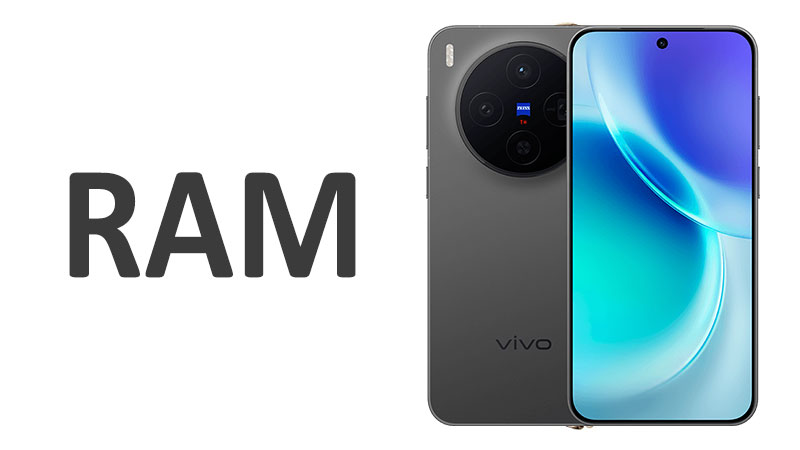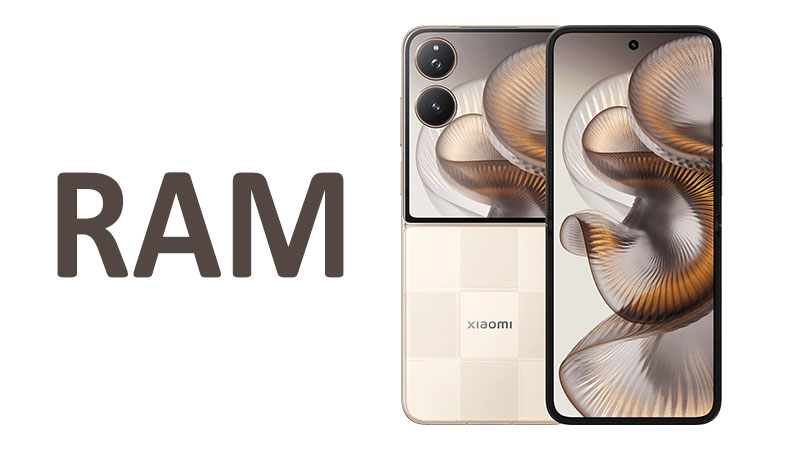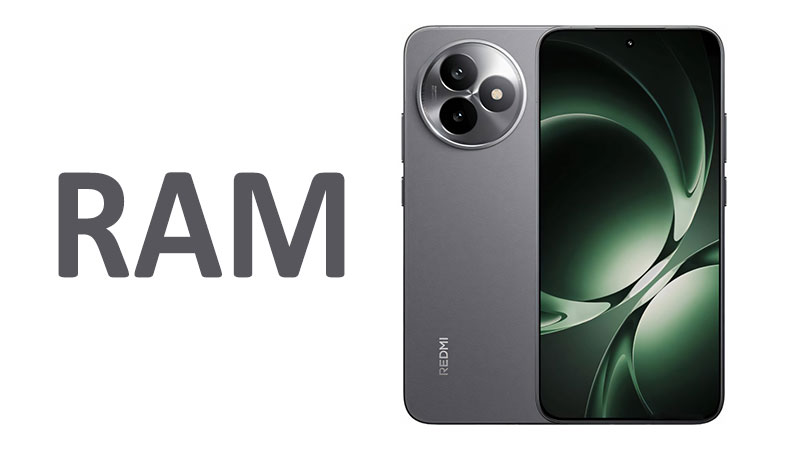The vivo X300 RAM capacity is a central element driving its exceptional daily performance. Random Access Memory, or RAM, is critical for speed and seamless multitasking. The X300 is available in 12 GB and 16 GB configurations. These memory pools are designed to meet diverse user needs. RAM capacity directly determines how many applications can run simultaneously. It also dictates how fast the operating system can switch between tasks. We will analyze how these high-capacity options benefit the mainstream flagship user. This review covers multitasking, gaming stability, and long-term performance.
Understanding the X300 RAM Options
The vivo X300 offers two highly competitive memory options. The standard 12 GB RAM model sets a high bar for speed and efficiency. This capacity is more than sufficient for the vast majority of smartphone users. It provides smooth performance for intensive photo editing. It also easily handles powerful, graphically demanding mobile games. Most consumers will find this 12 GB choice highly capable.
The 16 GB RAM option caters to a small, demanding subset of users. This is the maximum memory available on the X300 device. It is designed to offer maximum overhead and stability. This capacity is intended for users who engage in heavy, sustained multitasking. It provides a significant buffer for future software updates. The 16 GB model is essentially the ultimate longevity option.
Both configurations utilize the very latest mobile RAM technology. This cutting-edge standard is likely LPDDR5X or perhaps LPDDR6. This advanced technology ensures rapid data transfer rates. High speed is just as important as the sheer quantity of memory. Faster RAM allows the processor to access needed data instantly. This minimizes performance bottlenecks and improves responsiveness.
Specialized Comparison: RAM in the Mainstream
Many older flagship phones used 8 GB of RAM as their base model. The X300 starting at 12 GB represents a significant jump in memory provision. This higher baseline eliminates memory-related performance worries immediately. Competitor devices sometimes still offer 8 GB variants. The X300 outperforms them in app retention and multitasking stability.
The 12 GB capacity is a key selling point in the mainstream segment. It ensures the phone stays relevant for a longer period of time. Users get true flagship performance without needing the top 16 GB configuration. The X300’s commitment to large memory is excellent value.
Pros and Cons of 12 GB RAM
The key advantage of the 12 GB option is the favorable price point. It offers a perfect balance of cost and high-end performance. Power consumption is marginally lower than the 16 GB model. This can contribute to slightly better battery endurance during heavy use.
The primary disadvantage is the reduced buffer for future complexity. New operating system features, particularly AI services, demand increasing memory. In four years, 12 GB might become the minimum requirement. Users focused on extreme longevity might see this as a slight con.
Multitasking Efficiency and App Retention
RAM capacity is the foundation of a fluid multitasking experience. When users switch between applications, the phone attempts to keep the previous app in memory. A lack of RAM forces the system to aggressively close older applications. Returning to a closed app requires a complete reload. This reloading process introduces noticeable delays.
The 12 GB X300 can easily manage more than ten complex apps simultaneously. This includes switching between social media, banking apps, and light games. The transition is instantaneous and seamless, feeling very polished. The user almost never encounters frustrating app reloads in daily use. This promotes an incredibly efficient workflow.
The 16 GB variant further enhances this capability. It provides a larger safety net for running maximum background tasks. Users can keep several large games and demanding creative apps open at once. The extra 4 GB is a dedicated performance headroom. This is most beneficial for professional users or those who never close an application.
Specialized Comparison: OS Optimization Synergy
The performance of the RAM is amplified by vivo’s operating system. The system likely includes intelligent memory management routines. These are designed to predict user needs and prioritize active applications. This ensures that the RAM is used as efficiently as possible. It avoids unnecessary data swapping.
Vivo’s Funtouch OS or OriginOS may feature proprietary memory compression techniques. These techniques make the available memory work harder. They essentially increase the effective capacity of the RAM. The X300’s large physical RAM minimizes the reliance on these slower software tricks. This ensures consistently hardware-driven speed.
Buyer’s Consideration: Daily Habits
Buyers should carefully evaluate their typical multitasking habits. If you use four to eight common apps, 12 GB provides a perfect, smooth experience. If you are a mobile developer or constantly switch between dozens of tasks, 16 GB is worth the upgrade. For most people, the 12 GB option offers optimal memory performance. The extra 4 GB is a luxury, not a necessity for the average user.
Gaming Performance and Resource Allocation
The vivo X300 RAM plays a direct role in maintaining smooth gaming sessions. Modern mobile games are incredibly resource-intensive. They require multiple gigabytes of memory to store high-resolution textures and complex level assets. The ample RAM ensures the game data is always readily accessible. This is key for stable frame rates.
Low-memory phones often experience micro-stutters during heavy graphical loads. This happens when the system struggles to load assets quickly enough. The X300’s 12 GB and 16 GB capacities completely eliminate this problem. This guarantees an uninterrupted and fluid gaming experience. The system always dedicates enough resources to the core game.
The 16 GB model is beneficial for users who stream their gameplay. Running a game, a screen recorder, and a live stream chat app requires significant memory. The larger RAM pool prevents these background services from slowing down the game. It ensures peak performance is maintained even under extreme load. This makes the 16 GB a tool for power gaming and content creation.
Specialized Comparison: Console-Quality Gaming
The memory specifications of the X300 rival high-performance gaming consoles. The amount of RAM packed into this phone is comparable to some modern consoles. This level of memory is essential for running titles designed for high-fidelity graphics. The X300 is built to handle the next generation of console-ported mobile games.
Competitor phones with lower RAM struggle to manage these new, massive titles. The X300, even in its 12 GB configuration, offers a clear advantage. It is engineered for sustained, high-performance gaming sessions. This makes the X300 a powerful portable gaming platform.
Pros and Cons in Gaming
The most important pro is the complete lack of memory-induced performance hiccups. The generous RAM capacity ensures fast in-game loading times and quick asset retrieval. This provides a highly consistent and immersive gaming environment.
There are practically no cons regarding the RAM for gaming purposes. Both 12 GB and 16 GB perform exceptionally well. The only consideration is the cost difference between the two versions. The 12 GB model is the smarter financial choice for dedicated gaming.
RAM Technology: Speed and Power Efficiency
The X300 utilizes the latest generation LPDDR memory standard. LPDDR stands for Low Power Double Data Rate. This memory type is specifically optimized for mobile devices. It achieves incredibly fast data speeds while minimizing power consumption. This efficiency is critical for maximizing battery life.
The likely LPDDR5X or LPDDR6 standard offers vast improvements in bandwidth. Data moves between the chipset and memory faster than ever before. This high throughput eliminates processing bottlenecks effectively. It allows the main processor to run at its highest capability. The memory complements the power of the flagship chipset.
Improved power efficiency has secondary benefits for the phone. Memory that runs faster and more efficiently generates less heat. Less heat means better thermal management within the compact chassis. This prevents the phone from throttling its performance during long, demanding tasks. The LPDDR standard is a quiet hero of the X300’s smooth operation.
Specialized Comparison: Efficiency Gains
Comparing the latest LPDDR standard to older LPDDR4X is revealing. The newer standard operates at lower voltages. This directly reduces the power draw from the battery. The faster speed also allows the memory to complete tasks quicker. It enters a low-power state sooner, saving overall energy.
Many non-flagship devices rely on older, less efficient RAM. The X300’s advanced RAM technology is a key distinction. This invisible upgrade ensures superior power economy. It contributes significantly to the X300’s potential for all-day usage. The technology reinforces its flagship credentials.
Buyer’s Consideration: Longevity and Value
The speed of the RAM is a major indicator of the phone’s lifespan. Cutting-edge LPDDR ensures the phone stays relevant for many years. Older RAM technology often becomes obsolete faster than the processor. The X300’s use of the latest RAM standard guarantees better long-term performance. This makes the X300 an excellent long-term investment.
RAM and Operating System Optimization
Vivo’s software stack, likely Funtouch OS, is highly optimized for RAM usage. The operating system employs sophisticated algorithms for memory management. These routines learn the user’s habits over time. The system then preemptively loads frequently used apps into the memory. This reduces the visible load time to almost zero.
A dedicated portion of the RAM is reserved for core system services. This ensures the phone’s foundational processes always run smoothly. The large 12 GB or 16 GB capacity means this reservation is negligible. The user always retains ample memory for personal applications. The generous capacity supports the OS comfortably.
The operating system also manages memory fragmentation diligently. Fragmentation occurs when memory becomes inefficiently utilized over time. Vivo’s software includes advanced routines to keep the memory clean. This ensures that memory access remains quick and efficient over the phone’s life. The OS maintains optimal performance continuously.
Specialized Comparison: Software Synergy
The deep integration between the hardware and Funtouch OS is a performance multiplier. This software synergy provides superior real-world speed compared to basic Android implementations. Vivo’s customizations allow for aggressive, yet stable, pre-loading techniques. This results in faster app switching and a highly responsive feel.
Competitors with similar RAM may lack this level of software optimization. The X300 combines powerful memory with intelligent management software. This gives the device a tangible edge in daily speed. The OS ensures the large memory is always working for the user. The system feels dynamic and responsive at all times.
Pros and Cons of Deep OS Integration
A significant pro is the overall fluid user experience. Apps appear to load instantaneously, enhancing productivity. The deep integration promotes system stability even under sustained high load. The OS effectively utilizes the phone’s massive memory resource.
A minor con can be overly enthusiastic memory management at times. Occasionally, the OS might incorrectly predict which app the user needs next. This can cause a small, momentary delay if the prediction is wrong. However, the system quickly corrects these minor missteps. The speed benefits easily outweigh these rare occurrences.
Future-Proofing: Assessing the 16 GB Need
The question of whether 16 GB is necessary is a key decision point for buyers. For the next three years, 12 GB will easily satisfy all software needs. It is the new high standard for performance. However, mobile AI and new large application formats are constantly emerging. These new technologies will increasingly demand more memory.
The 16 GB capacity is a long-term investment in device relevance. It offers the maximum possible buffer against future increases in software demand. This is the optimal choice for users who plan to keep their X300 for four years or longer. New AI features often require a large, dedicated memory pool. This trend will ensure 16 GB remains useful.
The 16 GB variant is also ideal for specialized use cases. This includes power users who run complex programming tools or virtualization apps. The extra memory provides the necessary stability for these demanding applications. It reduces the chance of system instability under extreme, non-standard loads.
Specialized Comparison: Longevity and 16 GB![]()
The 16 GB model offers the longest path to peak performance retention. Older phones with 8 GB memory are already struggling with modern software. The jump from 12 GB to 16 GB provides maximum breathing room. This relatively small cost difference provides substantial dividends later on.
Competitor flagships sometimes reserve 16 GB for their most expensive variants. Vivo makes this option accessible on the standard X300. This is a clear consumer-friendly strategy for long-term value. The 16 GB option ensures maximum performance longevity.
Important Buyer Knowledge: Value vs. Insurance
Buyers should remember the diminishing returns of memory capacity. The actual speed difference between 12 GB and 16 GB is small today. The 16 GB is primarily an insurance policy for the future. Only choose the 16 GB model if you require absolute zero compromise. If you value price and performance today, the 12 GB is the smarter choice. The 12 GB is a fantastic value proposition for the majority.
Conclusion: An Informed Decision on the X300 RAM
The vivo X300 RAM specification is a key strength of the device. The choices between 12 GB and 16 GB cater to the entire flagship market. Both options utilize the fastest, most power-efficient LPDDR memory available. This guarantees exceptional speed and minimal power consumption.
The 12 GB model is the clear performance-to-value leader. It provides more than enough capacity for all current heavy tasks, including intensive gaming. This variant is the optimal recommendation for 95% of all potential users. It delivers true flagship speed at a lower entry cost.
The 16 GB model is reserved for the extreme power user and longevity enthusiast. It ensures maximum app retention and offers complete future-proofing. This option provides the absolute largest memory buffer available today. Buyers should select 16 GB only if they require total hardware peace of mind. Both options confirm the X300 as a mobile performance champion.
Frequently Asked Questions (FAQ)
1. What are the two RAM capacities offered for the vivo X300?
The vivo X300 comes in two memory configurations, offering either 12 GB or 16 GB of RAM.
2. Does the X300 RAM speed affect battery life?
Yes, the X300 uses highly efficient LPDDR memory. Its speed and efficiency help reduce power consumption, aiding battery life.
3. Is 16 GB of RAM necessary for modern mobile games?
No, 12 GB is more than sufficient for running all current mobile games smoothly and maintaining high frame rates.
4. How does the X300 manage its large RAM capacity?
Vivo’s custom operating system uses smart optimization algorithms. These manage memory efficiently and pre-load apps to ensure smooth switching.
5. Should I choose 12 GB or 16 GB for best value?
The 12 GB variant offers the best value for most users. The 16 GB option is mainly for future-proofing and extreme multitasking.



